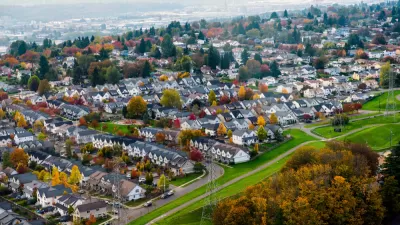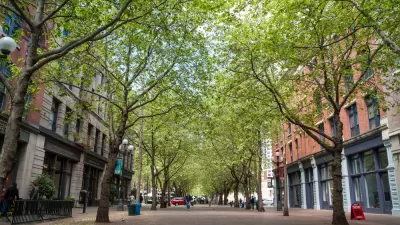Seattle Mayor Ed Murray has released a draft plan to overhaul the city's stormwater infrastructure to reduce the pollution levels in Puget Sound.
"In light of polluted stormwater runoff threatening water quality in Puget Sound, Seattle Mayor Edward B. Murray today released a draft citywide Green Stormwater Infrastructure Strategy, outlining plans to accelerate green infrastructure approaches for preventing this type of water pollution," according to a press release posted on the WaterWorld website.
The post also includes a description of the infrastructure behind the city's plan to reduce stormwater pollution: "Green stormwater infrastructure (GSI) prevents overflows and pollution much like a forest would -- by slowing and cleaning the water and either reusing it or allowing it to soak back through the soil. Examples of GSI include roadside bioretention swales and street trees that manage street runoff; rain gardens and cisterns that manage roof runoff; and green roofs and permeable pavement that are self-managing."
The plan is intended as a response to Seattle City Council Resolution 31459, which, in 2013, "challenged Seattle to rely on GSI to manage stormwater runoff wherever possible and set an aggressive target to manage 700 million gallons of stormwater runoff annually with GSI by the year 2025 -- a seven-fold increase over the city's 2012 baseline," according to the post.
FULL STORY: Seattle releases citywide green infrastructure strategy to combat stormwater pollution

Study: Maui’s Plan to Convert Vacation Rentals to Long-Term Housing Could Cause Nearly $1 Billion Economic Loss
The plan would reduce visitor accommodation by 25,% resulting in 1,900 jobs lost.

North Texas Transit Leaders Tout Benefits of TOD for Growing Region
At a summit focused on transit-oriented development, policymakers discussed how North Texas’ expanded light rail system can serve as a tool for economic growth.

Why Should We Subsidize Public Transportation?
Many public transit agencies face financial stress due to rising costs, declining fare revenue, and declining subsidies. Transit advocates must provide a strong business case for increasing public transit funding.

A Visual Celebration of Manhattan’s Chinatown Elder Community, Through Food
Lanterns, cafeteria trays, and community connection take center stage in this stunning photo essay.

How to Make US Trains Faster
Changes to boarding platforms and a switch to electric trains could improve U.S. passenger rail service without the added cost of high-speed rail.

Columbia’s Revitalized ‘Loop’ Is a Hub for Local Entrepreneurs
A focus on small businesses is helping a commercial corridor in Columbia, Missouri thrive.
Urban Design for Planners 1: Software Tools
This six-course series explores essential urban design concepts using open source software and equips planners with the tools they need to participate fully in the urban design process.
Planning for Universal Design
Learn the tools for implementing Universal Design in planning regulations.
City of Santa Clarita
Ascent Environmental
Institute for Housing and Urban Development Studies (IHS)
City of Grandview
Harvard GSD Executive Education
Toledo-Lucas County Plan Commissions
Salt Lake City
NYU Wagner Graduate School of Public Service




























